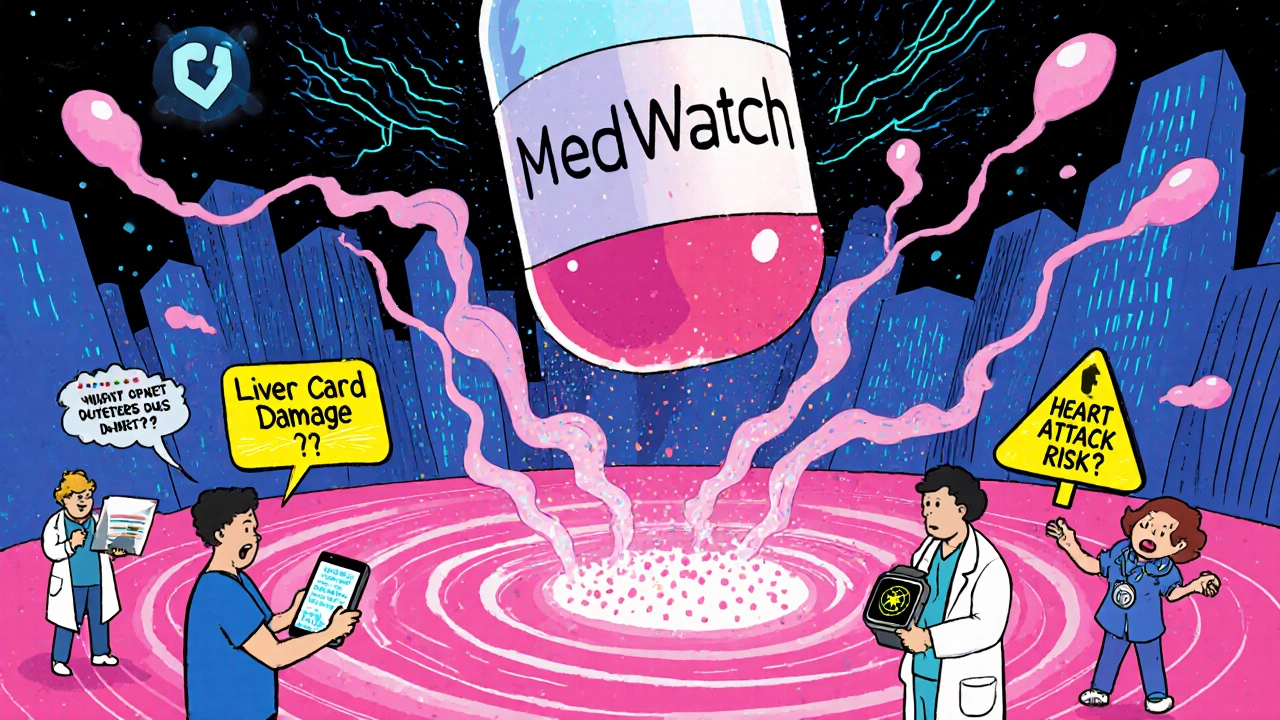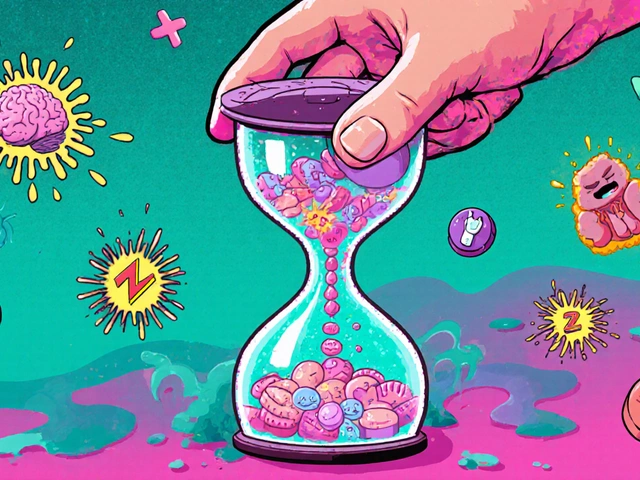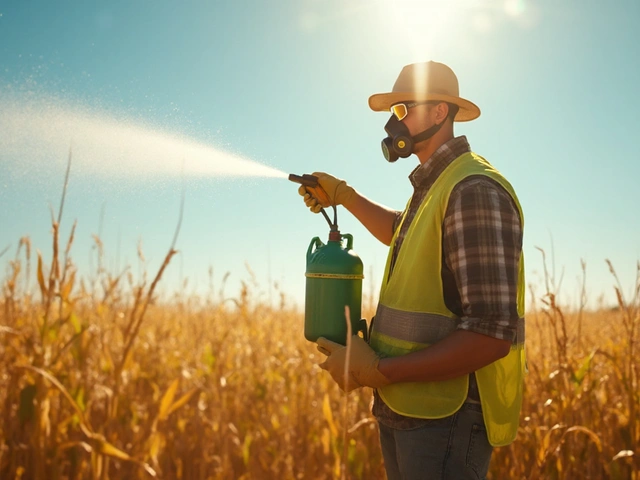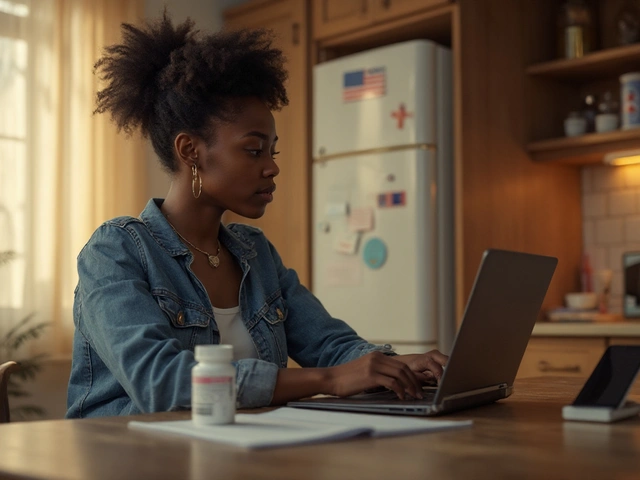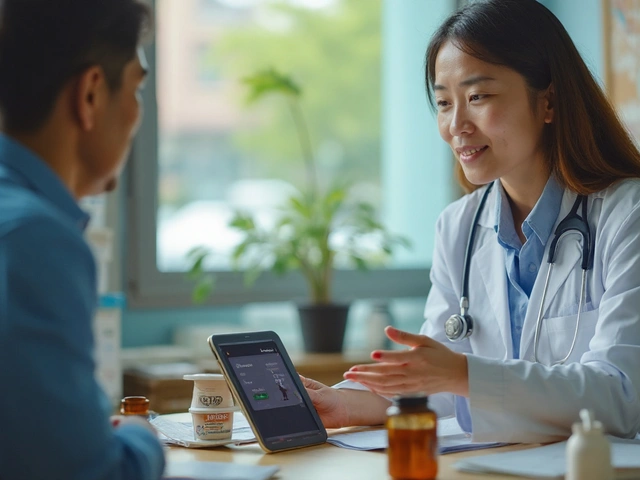Side Effect Detection Calculator
How Many People Needed?
Calculate the number of patients needed to detect rare side effects at a given probability. Compare to clinical trial sizes to understand why post-marketing surveillance is critical.
Only 1-10% of adverse events are reported. The FDA estimates 90-99% of adverse events go unreported.
Results
Minimum patients needed:
Comparison to clinical trials:
Statistical probability:
For example: If a side effect occurs in 1 in 10,000 people (0.01%), you'd need to treat approximately 46,000 people to have a 95% chance of seeing at least one case. Most clinical trials only include 5,000 patients, which is why rare side effects often go undetected until after the drug is approved and used by millions.
Every year, millions of people take new medications. They work. They help. But sometimes, something unexpected happens - a side effect that wasn’t seen in clinical trials. Why? Because those trials, no matter how thorough, can’t capture the full picture of how a drug behaves in the real world. That’s where post-marketing pharmacovigilance comes in. It’s not a backup system. It’s the frontline defense against hidden dangers that only show up after a drug is used by hundreds of thousands, even millions, of people.
Why Clinical Trials Miss Side Effects
Clinical trials are tightly controlled. Participants are carefully selected. They’re healthy or have one specific condition. They’re monitored closely. And they’re usually only a few thousand people at most. That’s not enough to catch rare side effects. If a reaction happens in 1 in 10,000 people, you’d need to give the drug to 10,000 people just to see it once. Most trials don’t even get that far.Real life is messy. People take multiple drugs at once. They have diabetes, heart disease, kidney problems. They’re older. Younger. Pregnant. Taking herbal supplements. Their bodies react differently. A drug that’s safe in a 45-year-old with no other conditions might cause liver damage in a 72-year-old on five other medications. That’s the gap clinical trials leave behind.
That’s why the FDA approved Vioxx in 1999 based on trials with 5,000 patients - and pulled it off the market in 2004 after it was linked to 88,000 heart attacks in the U.S. alone. The risk didn’t show up in trials. It showed up when 80 million people used it. That’s not a failure of the drug. It’s proof that we need better systems to watch what happens after approval.
How Side Effects Are Caught After Approval
There are three main ways new side effects are found after a drug hits the market: reports from people, data mining, and targeted studies.Spontaneous reporting is the oldest and most common method. Doctors, pharmacists, nurses, and even patients report strange symptoms they think might be linked to a drug. In the U.S., this happens through the FDA’s MedWatch system. In the UK, it’s the Yellow Card Scheme. These systems get about 1.2 million reports a year in the U.S. and 87,000 in the UK. But here’s the catch: experts estimate only 1% to 10% of actual side effects are ever reported. Why? Because it’s time-consuming. A single report can take 20 minutes to fill out. Many clinicians skip it.
Electronic health record (EHR) mining is changing the game. The FDA’s Sentinel Initiative pulls data from over 300 million patient records across hospitals, clinics, and pharmacies. It doesn’t wait for someone to report something. It looks for patterns - like a spike in kidney failure cases among people prescribed a certain drug. It uses algorithms to flag unusual clusters. In 2023, Sentinel 3.0 started using AI to scan 5 million new records daily. It found signals 73% faster than before.
Record linkage connects different databases. In the UK, the Clinical Practice Research Datalink (CPRD) links prescription records, hospital admissions, death certificates, and lab results. If someone gets a new drug and ends up in the ER with a rare rash two weeks later, the system can tie those dots together automatically. It’s like putting together a puzzle no single doctor could see alone.
Who’s Watching, and How
Different countries run their own systems, but they’re all trying to do the same thing: find hidden risks fast.The European Union uses EudraVigilance, a database that collects over 2 million reports a year from 30 countries. It’s one of the most advanced systems. Every drug company selling medicine in Europe must submit detailed safety reports every few months. The EMA’s Pharmacovigilance Risk Assessment Committee (PRAC) reviews these and flags potential problems. In 2022 alone, they identified 1,843 possible safety signals - and confirmed 287 as real risks.
In Japan, drug makers must run mandatory reexamination programs for 4 to 10 years after approval. They track every patient who gets the drug. It’s expensive, but it works. Japan caught serious liver damage risks with certain diabetes drugs years before the U.S. or EU did.
The U.S. system is a hybrid. It relies on passive reporting (MedWatch) and active surveillance (Sentinel). But it’s not perfect. A 2020 Harvard study found that 90% to 99% of adverse events go unreported. That’s a huge blind spot.
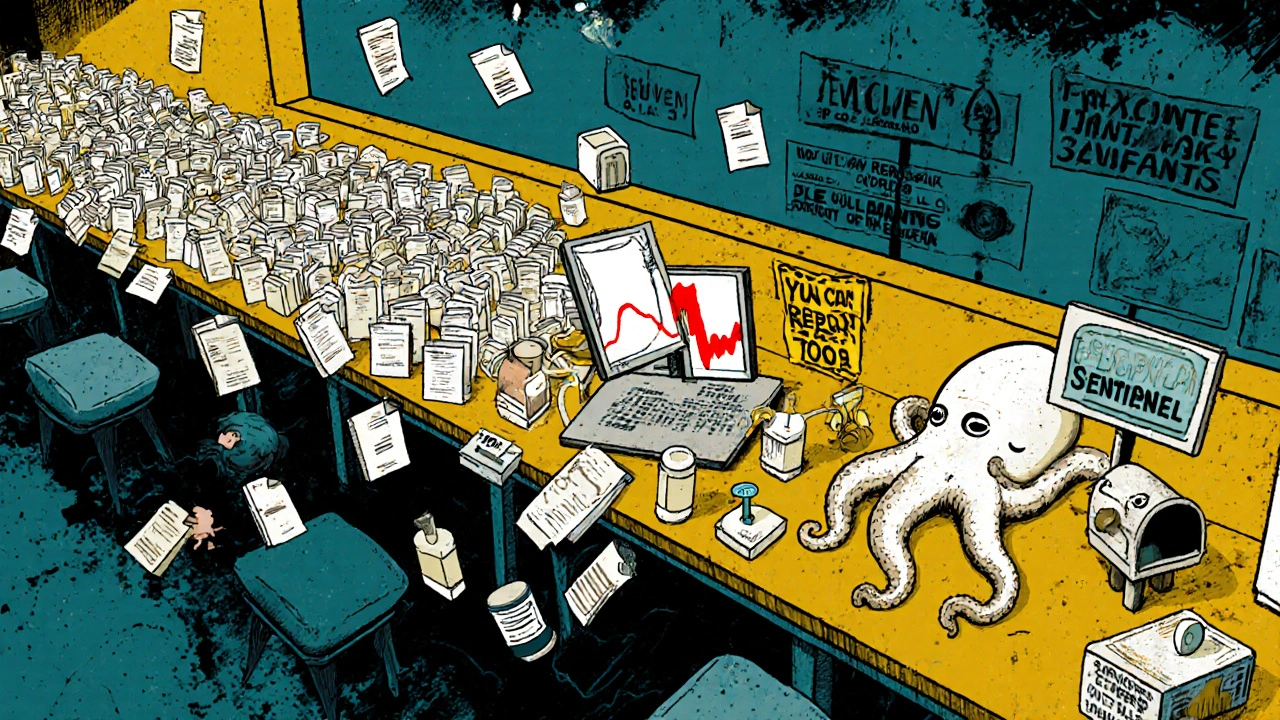
What Happens When a Risk Is Found
Finding a signal is only the first step. The real work is deciding what to do about it.If a side effect is rare but serious - like a life-threatening skin reaction - regulators might add a black box warning to the drug label. That’s the strongest warning the FDA can give. It’s printed in bold, right at the top of the prescribing information.
If the risk is clear and widespread, they might restrict who can get the drug. Thalidomide, for example, is still used today - but only under a strict program that requires pregnancy tests, contraception, and signed consent forms. It’s banned for pregnant women, and only dispensed through certified pharmacies.
In extreme cases, the drug is pulled. Vioxx. Trovan. Rezulin. These were all approved, widely used, and then removed because post-marketing data showed they caused more harm than good. The cost? Billions in lost revenue. The benefit? Thousands of lives saved.
Drug companies are also required to create Risk Management Plans (RMPs). These are detailed documents that outline how they’ll monitor safety after launch. They include things like patient education materials, special training for doctors, and even direct mailings to prescribers. About 92% of new drugs approved by the FDA between 2015 and 2020 had at least one of these restrictions.
Patients and the System
Patients are the most important part of this system - but they’re often left out of the conversation.A 2021 FDA survey found that only 12% of patients even knew about MedWatch. Most don’t realize they can report a side effect themselves. But when they do, it matters. A patient reporting unexplained fatigue after starting a new blood pressure pill might be the first clue to a dangerous interaction.
Some systems are making it easier. The UK’s Yellow Card app lets people report side effects in under 5 minutes. The FDA is testing similar tools. But the biggest barrier isn’t technology - it’s awareness. People don’t know they have a role. They think, “That’s the doctor’s job.” But doctors are overloaded. Nurses are stretched thin. Patients are the ones living with the drug every day. Their input is irreplaceable.
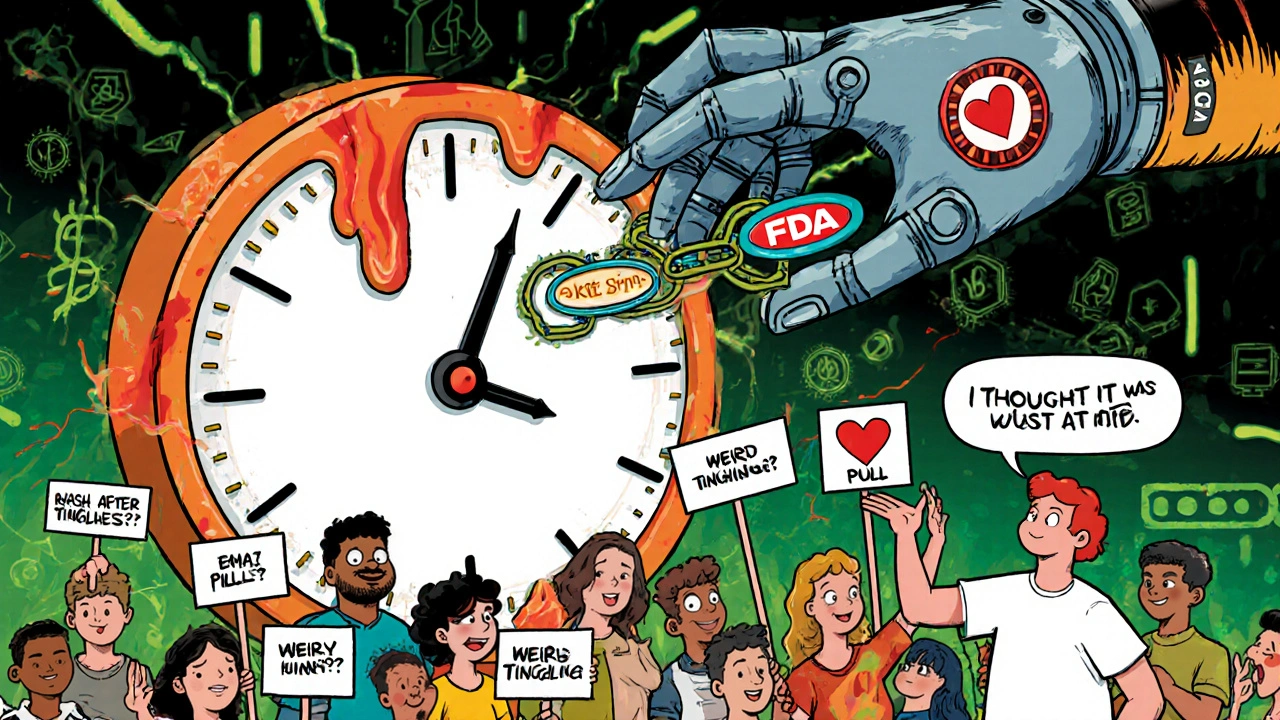
The Future: AI, Wearables, and Real-World Data
The next big leap in pharmacovigilance isn’t in labs - it’s in your smartphone.Apple and Pfizer are testing a program that uses Apple Watch data to detect irregular heart rhythms in people taking a new heart drug. If the watch picks up atrial fibrillation, the system alerts the patient and their doctor. That’s real-time safety monitoring.
AI is getting smarter too. IBM Watson Health used social media posts to predict adverse reactions with 87.4% accuracy. People talking about “weird tingling” after taking a new antidepressant? The system flagged it before regulators even saw a formal report.
Blockchain is being tested to securely share safety data between companies and regulators without compromising privacy. Novartis and Roche are already piloting it. The goal? Faster, more accurate signal detection.
By 2030, experts predict real-world data from pharmacovigilance will influence 65% of regulatory decisions - up from just 28% in 2022. That means drugs will be approved with more confidence, and dangerous ones will be caught before they hurt more people.
Why This Matters to You
You might think this is all behind-the-scenes bureaucracy. But it’s not. It’s personal.If you’re on a new medication, you’re part of this system. Your body is a data point. Your report could save someone else’s life. If you notice something unusual - a rash, dizziness, nausea, mood changes - don’t brush it off. Talk to your doctor. And if they don’t report it, report it yourself. It takes minutes. It might mean the difference between a warning label and a drug recall.
Post-marketing pharmacovigilance isn’t perfect. It’s slow. Underfunded. Underused. But it’s the only system we have that can catch the dangers clinical trials miss. And it’s getting better - faster, smarter, more inclusive.
Medications save lives. But they can also harm. The only way to know which is which is to keep watching. And that watch - it’s not just the regulators’. It’s yours too.
What is post-marketing pharmacovigilance?
Post-marketing pharmacovigilance is the ongoing monitoring of drug safety after a medication has been approved and sold to the public. It tracks adverse reactions that weren’t detected during clinical trials, using reports from healthcare providers, patients, electronic health records, and data analysis to identify new risks.
Why are side effects missed in clinical trials?
Clinical trials involve small, carefully selected groups of people - usually under 5,000 - and exclude those with other health conditions or who take multiple medications. Side effects that only appear in larger, more diverse populations, or after long-term use, often don’t show up until after the drug is widely used.
How do I report a side effect?
In the U.S., you can report side effects through the FDA’s MedWatch program online or by phone. In the UK, use the Yellow Card Scheme via their website or app. Many countries have similar systems. You don’t need to be a doctor - patients can and should report their own experiences.
Are all side effects reported?
No. Experts estimate that only 1% to 10% of actual adverse drug reactions are reported. Many go unreported due to time constraints, lack of awareness, or uncertainty about whether the symptom is linked to the drug.
What happens after a side effect is reported?
Reports are analyzed for patterns. If a signal emerges - like a spike in liver damage among users of a specific drug - regulators investigate further. They may update drug labels, add warnings, restrict use, or, in rare cases, remove the drug from the market entirely.
Is pharmacovigilance the same everywhere?
No. The U.S. relies on passive reporting (MedWatch) and active surveillance (Sentinel). The EU uses a centralized system (EudraVigilance) with strict reporting rules. Japan requires mandatory long-term monitoring. Some countries have strong systems; others, especially in low-income regions, lack resources and infrastructure.
Can AI really predict drug side effects?
Yes. AI tools now analyze electronic health records, social media, and wearable data to detect patterns humans might miss. IBM Watson Health predicted adverse reactions from online posts with 87.4% accuracy. The FDA’s Sentinel System uses AI to scan millions of records daily, finding signals faster than ever before.

